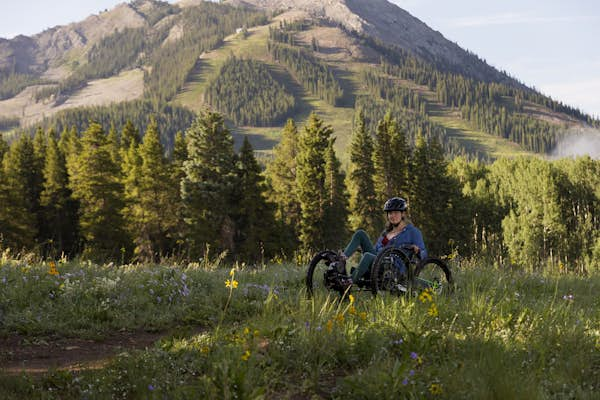As national parks look for ways to better serve travelers with disabilities, here are the top parks that are doing it right.
Visitors entering Yellowstone National Park, America’s first national park, pass under a columned basalt arch built in 1903 that is inscribed with the park’s purpose: “For the Benefit and Enjoyment of the People.”
It’s a grand promise of democratic ideals, but one that many U.S. parks initially failed to deliver on. Since Yellowstone National Park was established in 1872, a lack of accessibility features meant these public spaces often barred people with physical or cognitive disabilities. But thanks to a modern movement that prioritizes inclusion, many destinations are moving beyond those barriers. Today, accessibility is an integrated, not just an added, element of park maintenance, says Jeremy Buzzell, manager of park accessibility programs for visitors and employees at the National Park Service (NPS).
In 2012, the National Park Service formed an Accessibility Task Force to implement a five-year plan to improve access for people with disabilities by 2020. Some parks now offer assistive devices for people with mobility issues, allowing visitors to explore areas that were once off-limits. Some destinations offer sign language interpreted tours for the deaf, tactile maps for the blind and low vision, and sensory guides for visitors with cognitive disabilities. Still, the National Park Service faces significant barriers to inclusion.
 Grand Prismatic Spring in Yellowstone National Park is wheelchair accessible © Imre Cikajlo / Getty Images
Grand Prismatic Spring in Yellowstone National Park is wheelchair accessible © Imre Cikajlo / Getty Images
“One of our biggest challenges is figuring out how to resolve the conflict between what we’re trying to preserve and what we’re trying to provide access to,” Bazzell says. He points to the Statue of Liberty as an example: The green statue’s 19th-century framework was built before the Americans with Disabilities Act (ADA) implemented universal design standards in 1990, and preserving it means that an accessible elevator to the top of the statue is unlikely to be installed.
These obstacles can make it difficult for people with disabilities to determine which national parks are worth visiting. Opportunities vary from place to place, and there’s no one-size-fits-all solution when it comes to meeting accessibility needs. Buzzell suggests that travelers with disabilities consult the National Park Service’s Accessibility Portal and contact parks directly before visiting.
“It’s really important to do as much research as you can before you travel,” advises accessible travel blogger Corey Lee, who uses a wheelchair. “Doing your research before you travel will save you time when you get there and allow you to enjoy the park to the fullest.”
Candy Harrington, founding editor of accessible travel news site Emerging Horizons and author of the Accessible National Parks guidebook, recommends looking for detailed descriptions even when a hiking trail is labeled “accessible.” Just because it has an ADA symbol doesn’t necessarily mean the trail meets everyone’s access needs. But before you can dive into your research, you need to choose a destination, which is a daunting task considering there are 428 official NPS sites. We’ve compiled a list of the most accessible destinations (including one state park) to help everyone, from hearing-impaired hikers to autistic environmentalists, experience the joys of nature.
Things to know before you go
U.S. citizens and permanent residents with disabilities can apply for an access pass that allows entry to more than 2,000 federal recreation sites across the country, which is free (except for a $10 processing fee) and includes visits to national parks, wildlife refuges, and forests.
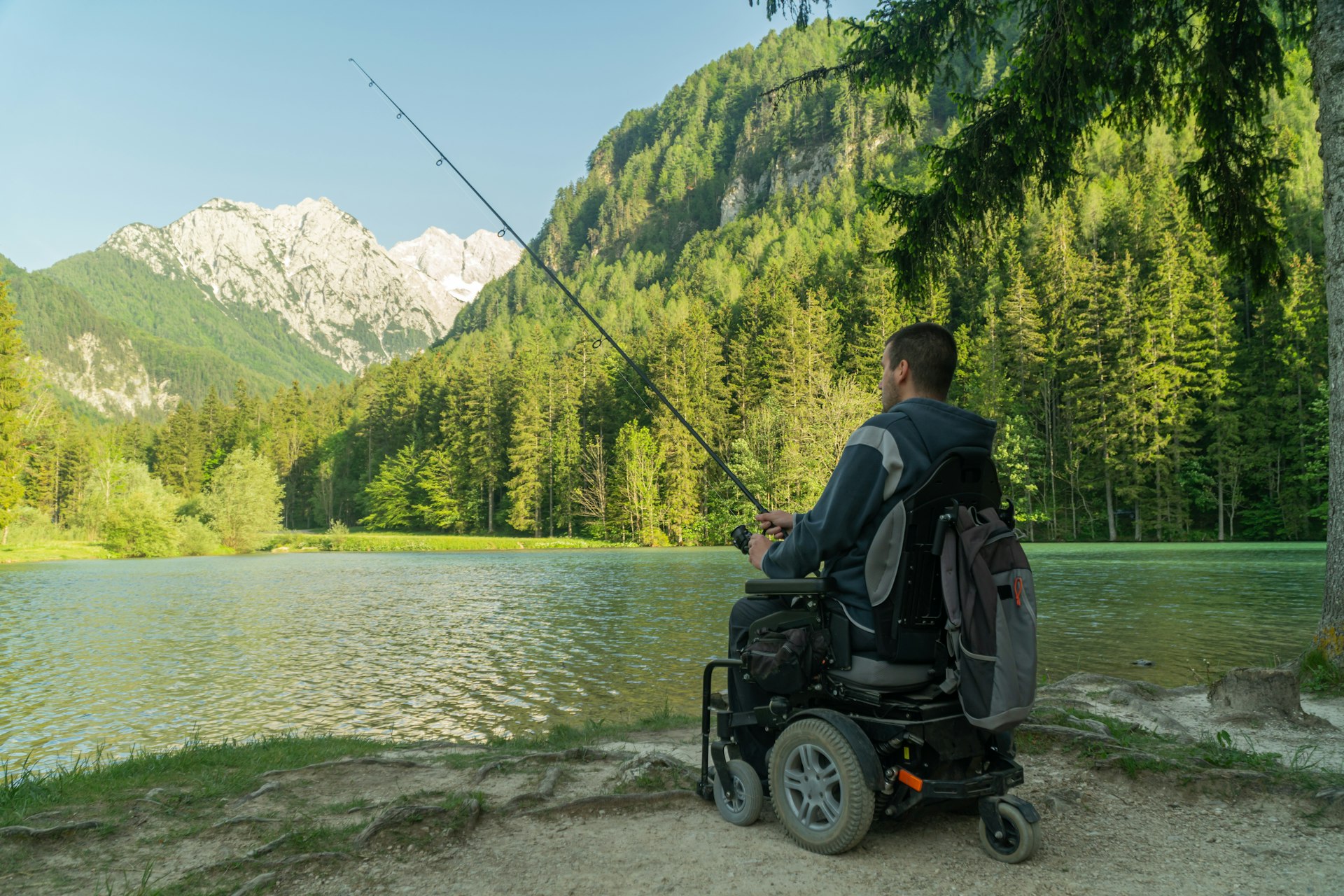 National parks continue to expand accessibility programs © 24K-Production / Shutterstock
National parks continue to expand accessibility programs © 24K-Production / Shutterstock
1. Yosemite National Park, California
Yosemite has it all: beautiful granite cliffs, sky-piercing sequoias, breathtaking waterfalls, and experiences to meet nearly every access need. Wheelchair users can travel effortlessly throughout the park on accessible shuttles that drop visitors off at paved trailheads, including the one-mile walk around Yosemite Falls and Bridal Veil Falls.
“You can also rent handbikes in Yosemite Valley,” Harrington says, allowing disabled athletes to zoom around the park’s relatively flat surfaces, and for visually impaired visitors, tactile models offer multisensory experiences at iconic lookouts like Tunnel View (made famous by photographer Ansel Adams), which overlooks granite peaks like El Capitan, Half Dome and Sentinel Rock.
Yosemite National Park’s greatest accessibility achievement is its program to ensure all visitors can experience the Call of the Wild. In 1979, the park was the first National Park Service to create a Deaf Services Coordinator as a summer ranger position. Today, this coordinator is a full-time position and oversees the national park’s most comprehensive program for the deaf and hard of hearing community. Download the Yosemite National Park Accessibility Guide for more information.
 Beach wheelchairs and track chairs make the sand dunes of the national park more accessible © SolStock / Getty Images
Beach wheelchairs and track chairs make the sand dunes of the national park more accessible © SolStock / Getty Images
2. Sleeping Bear Dunes National Seashore, Michigan
This 35-mile stretch of Michigan’s Gold Coast was previously off-limits to wheelchair users. More than a dozen sun-scorched beaches, 100 miles of rugged forest trails, and 300-foot-high sand dunes just weren’t wheelchair-friendly. Then, in 2019, Friends of Sleeping Bear, a nonprofit organization dedicated to increasing public enjoyment of the site, introduced trackchairs (powered chairs with treads) to help people with mobility impairments traverse the rugged trails.
Visitors can reserve a track chair to glide along trails like the grassy Bay View Trail, or rent a sand wheelchair for trekking through the dunes and beaches. For water adventures, the ADA-compliant Loon Lake pier offers an easy canoe or kayak loading and unloading system. Or just kick back and relax. Campsites at Platte River Campground, just steps from Loon Lake, are easily accessible.
 Sequoia National Park is one of the more accessible parks © JLPH / Getty Images
Sequoia National Park is one of the more accessible parks © JLPH / Getty Images
3. Sequoia and Kings Canyon National Park, California
Accessible outdoor adventures are often blocked by a lack of reliable, first-hand information, and venturing into a trip without a disability-approved plan can be daunting. But in these two parks, which connect majestic redwood forests with the continental U.S.’s highest peaks, disability awareness is just a click away.
In 2021, Sequoia and Kings Canyon National Parks released a series of short films showcasing local visitors taking advantage of accessible accommodations, including an ASL tour of Crystal Cave, a tactile exhibit leading to the world’s largest trees, and flower-filled wheelchair-accessible campsites at Buckeye Campground.
For first-time visitors to the national park, the movies are a great stress reliever. Don’t worry about reinventing the wheel; there’s plenty of evidence that you can explore the grounds at your own pace. The park is also adjacent to Visalia, an Autism Certified Destination, meaning visitors with autism and other sensory sensitivities will feel welcome and safe during their stay in town.
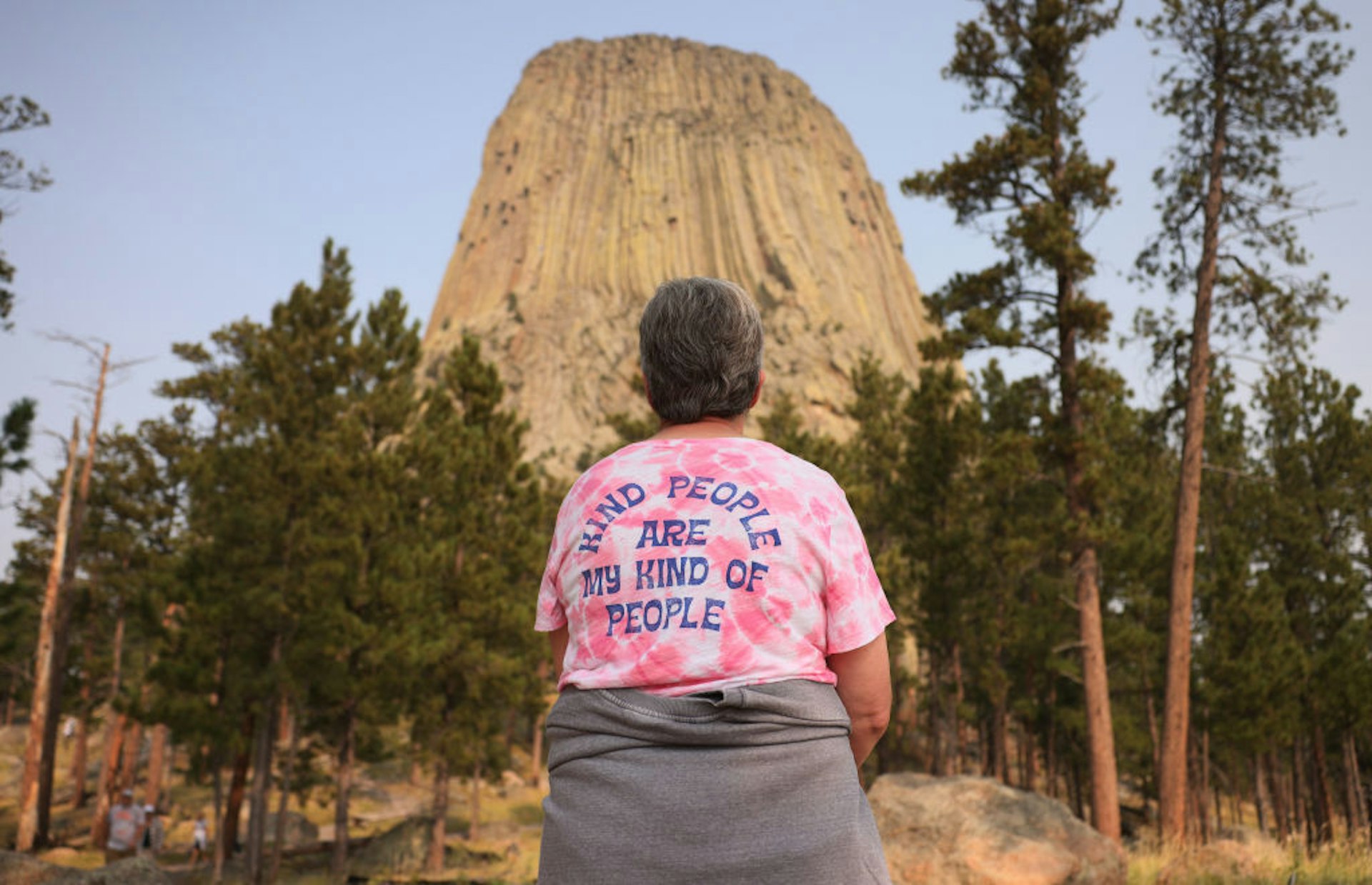 Devils Tower National Monument has many handicap-accessible facilities © Jessica Rinaldi/The Boston Globe via Getty Images
Devils Tower National Monument has many handicap-accessible facilities © Jessica Rinaldi/The Boston Globe via Getty Images
4. Devils Tower National Monument, Wyoming
Devils Tower is a 1,267-foot-tall columnar basalt monolith that pierces the northwestern Wyoming sky, a solitary spire surrounded by miles of flat grassland. Long considered sacred by Native Americans, the tower is now a pilgrimage site for nature lovers who enjoy hiking, climbing, stargazing and birdwatching within the 1,347-acre park.
With accessibility upgrades completed in 2021, the national monument is packed with disability-friendly amenities, including trails, restrooms, parking, and interactive exhibits. These exhibits include tactile sculptures, such as a bronze cast model on the trail to Devils Tower, which allows visually impaired hikers to experience the tower’s natural cracks caused by columnar jointing. For mountain outcasts interested in a more hands-on experience, Devils Tower Lodge offers adaptive climbing sessions for those with physical and cognitive disabilities.
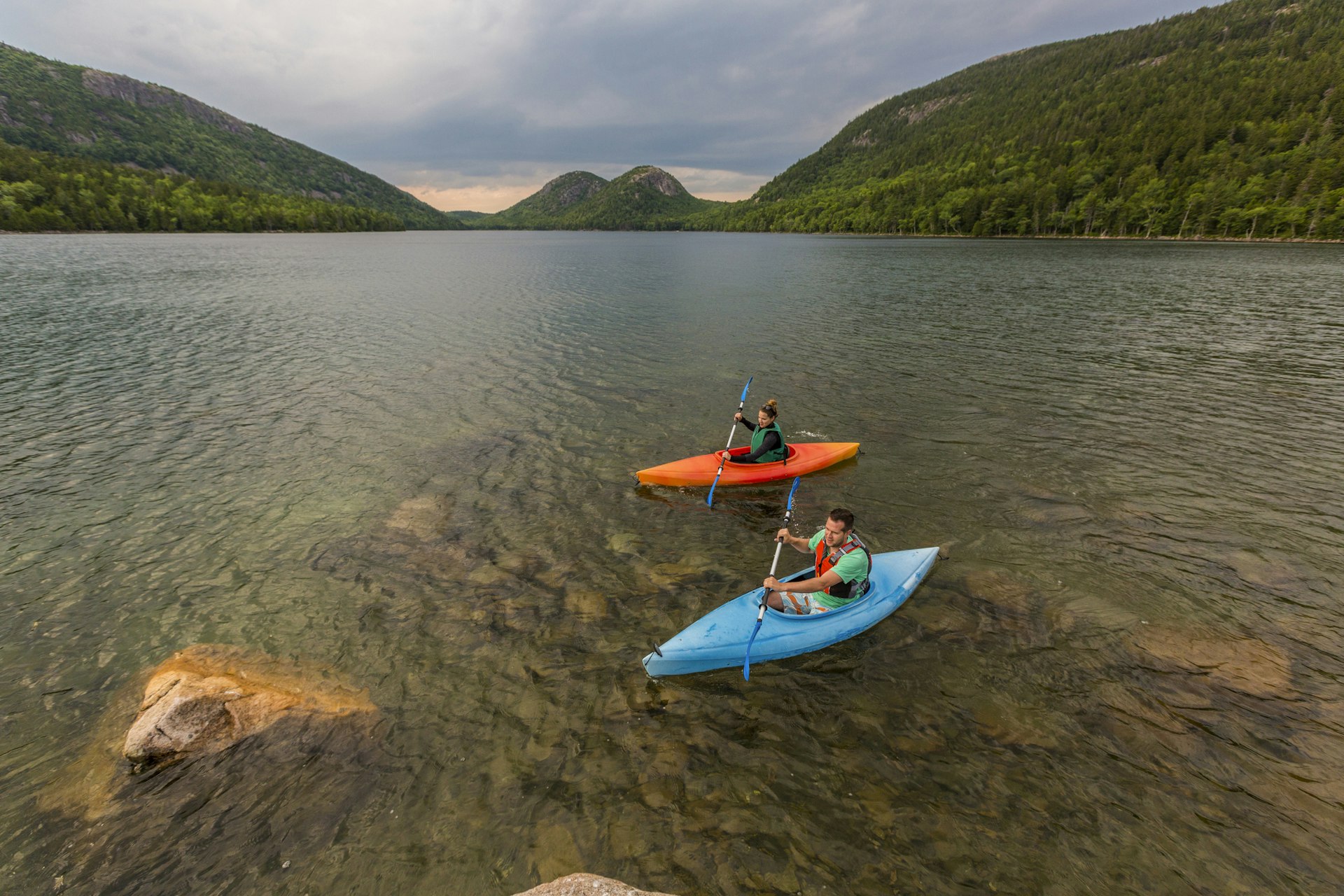 Acadia National Park’s new accessibility facilities will keep people from feeling like they’re beyond their capabilities © Jerry Monkman / Aurora Photos / Getty Images
Acadia National Park’s new accessibility facilities will keep people from feeling like they’re beyond their capabilities © Jerry Monkman / Aurora Photos / Getty Images
5. Acadia National Park, Maine
The Atlantic coast’s highest rocky promontory may seem intimidating for those with mobility issues, with plenty of steep mountain passes and rocky shores. But with 45 miles of gravel roads and 27 miles of roads encircling Acadia, New England’s only national park is perfect for getting around.
“The views from the top of Cadillac Mountain are amazing,” says Corey Lee, who used his power wheelchair to climb to the park’s highest peak in 2022. “There was a paved path up to the observation deck, and it was completely handicap accessible.” Lee also recommends the wheelchair-accessible Jessup Path, which winds through groves of birch and hemlock trees. You can see Acadia’s sights in a day by driving the Park Loop Road, but the handicap-accessible picnic sites, campgrounds, and beaches (including the trail to forested Echo Lake) make it worth staying overnight. For non-campers, the Island Explorer, a free handicap-accessible shuttle bus, runs between the park and nearby villages from late June to mid-October.
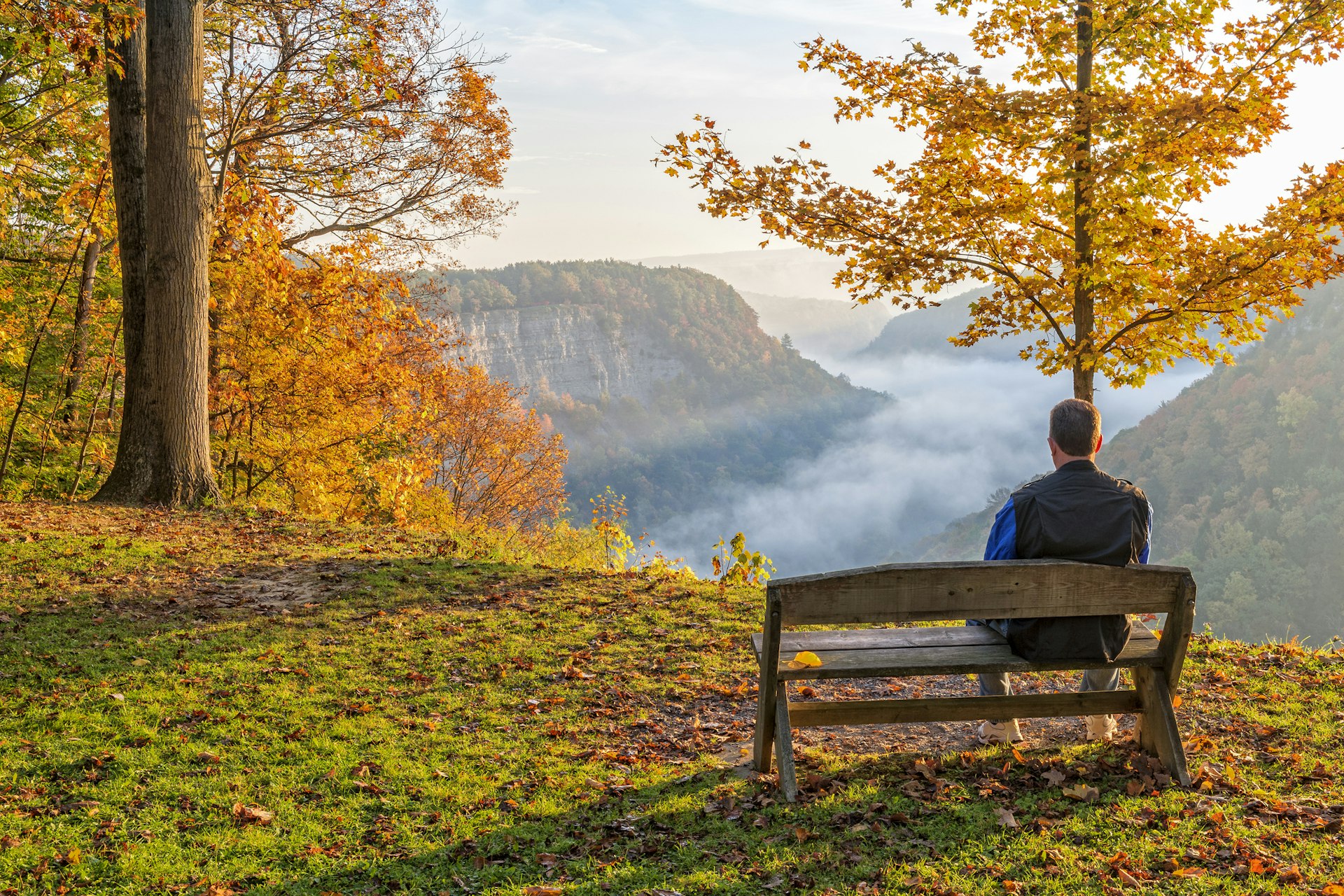 Ah, the accessibility! Taking a break at Letchworth State Park © JimVallee / Getty Images
Ah, the accessibility! Taking a break at Letchworth State Park © JimVallee / Getty Images
6. Letchworth State Park, New York
Letchworth is nicknamed the “Grand Canyon of the East,” with 66 miles of trails showcasing deep gorges carved by thundering rapids. There are must-sees around every bend, but the one-mile loop rates as the best for outdoor enthusiasts with cognitive disabilities.
The Autism Nature Trail (ANT) is a deep nature experience “designed specifically for people with autism spectrum disorder and other developmental disabilities, but suitable for visitors of all abilities and ages,” says former educator and ANT co-founder Lauren Penman. Hikers can explore eight sensory stations along a loop using tools from nature, like nuts, pine cones and fossilized rocks. There’s also an “Alone Zone” to relax along the journey.
Hikes are self-guided, but those wanting a more structured experience can join a scheduled program run by staff at Camp Puzzle Piece, a camp for families and children with autism. Recently, a single mother of three contacted the ANT team and said, “It’s exactly what we were looking for,” Penman says. Two of her children are on the autism spectrum, and although the family loves to travel, finding sensory-friendly activities can be a challenge. ANT was the perfect fit — a place where enjoying nature doesn’t mean sacrificing your needs, and where accessibility is a defining feature, not an afterthought.
This piece was originally written by Alisa Greenberg, with an updated version published in 2023.
This article was first published on October 20, 2021 and updated on January 3, 2024.

